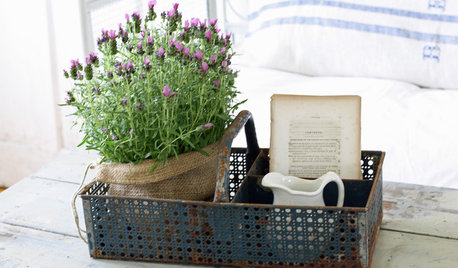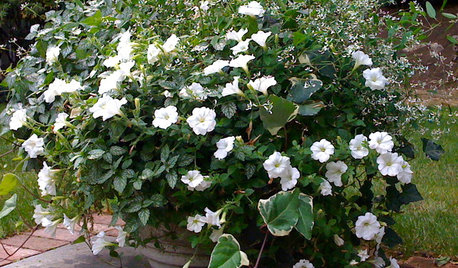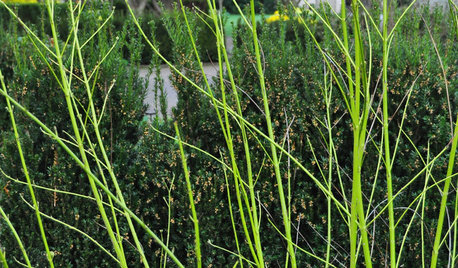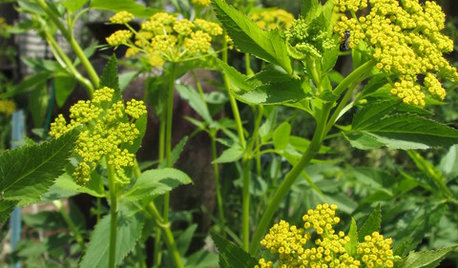Growers of potted up hosta
josephines167 z5 ON Canada
10 years ago
Related Stories

HOUSEPLANTSOutsmart Winter — Make Houseplants of Your Garden Growers
No need to watch Jack Frost play Wreck the Rosemary. Bring your garden inside for the winter, using containers and these guidelines
Full Story
CONTAINER GARDENSSolve Your Garden Border Dilemmas With Planted Pots
Set your containers free from the patio — placed among plantings in the ground, they fill unsightly gaps, let you experiment and more
Full Story
HOUSEPLANTSOne Pot, One Big Shot of the Tropics
Give your rooms exotic flair in a single stroke. Tall Kentia palm fits the tropical bill beautifully
Full Story
GARDENING GUIDES11 Perfect Plants for a Moonlit Garden — in Pots
Create an alluring after-dark aura on a patio or deck with container plants that glow white under the stars
Full Story
FALL GARDENING7 Reasons Not to Clean Up Your Fall Garden
Before you pluck and rake, consider wildlife, the health of your plants and your own right to relax
Full Story
GARDENING GUIDESOh, Deer! 10 Native Flowers That Stand Up to the Herds
Keeping a garden amid hungry deer can be hard, but these plants should fare well
Full Story
GARDENING GUIDESGreat Design Plant: Kumquats for a Juiced-Up Winter
Grow it for the edible fruit or its good looks alone. This citrus cousin will brighten any gray winter day
Full Story
LANDSCAPE DESIGNAll-White Gardens Light Up the Night
Lustrous blooms in white, cream and the palest ivory enchant in the landscape at night — and can be practical too
Full Story
Wake Up Your Garden With Lime-Colored Plants
A sprinkle of bright lime foliage can invigorate darker green garden areas and enliven shady spots all around your landscape
Full Story
GARDENING GUIDESGreat Design Plant: Golden Alexanders for Early Spring Color
Get sunny flowers while other garden growers are still asleep, with this adaptable prairie plant beloved by butterflies
Full StorySponsored
Franklin County's Custom Kitchen & Bath Designs for Everyday Living
More Discussions







uk-hostaman
ilovetogrow z9 Jax Florida
Related Professionals
Forest Park Landscape Architects & Landscape Designers · Florham Park Landscape Contractors · Long Beach Landscape Contractors · Morrisville Landscape Contractors · New Carrollton Landscape Contractors · Ansonia Landscape Contractors · Fremont Driveway Installation & Maintenance · Grover Beach Fence Contractors · Newington Fence Contractors · Selden Fence Contractors · Silver Spring Fence Contractors · Safety Harbor Fence Contractors · Carson Solar Energy Systems · Rialto Solar Energy Systems · Nutley Solar Energy Systemsjadie88
funnthsun z7A - Southern VA
ken_adrian Adrian MI cold Z5
bchosta 8b west coast canada
ilovetogrow z9 Jax Florida
bchosta 8b west coast canada
brandys_garden
josephines167 z5 ON CanadaOriginal Author
hostasmith
bkay2000
tiddisolo z8 Wales UK
funnthsun z7A - Southern VA
josephines167 z5 ON CanadaOriginal Author
Babka NorCal 9b
santamiller
jadie88
tiddisolo z8 Wales UK
josephines167 z5 ON CanadaOriginal Author
luuk
josephines167 z5 ON CanadaOriginal Author
newhostalady Z6 ON, Canada
newhostalady Z6 ON, Canada
josephines167 z5 ON CanadaOriginal Author
ilovetogrow z9 Jax Florida
funnthsun z7A - Southern VA
bkay2000
bkay2000
josephines167 z5 ON CanadaOriginal Author
newhostalady Z6 ON, Canada
josephines167 z5 ON CanadaOriginal Author
jadie88
josephines167 z5 ON CanadaOriginal Author
paula_b_gardener 5b_ON
newhostalady Z6 ON, Canada
luuk
luuk
newhostalady Z6 ON, Canada
bkay2000
josephines167 z5 ON CanadaOriginal Author
luuk